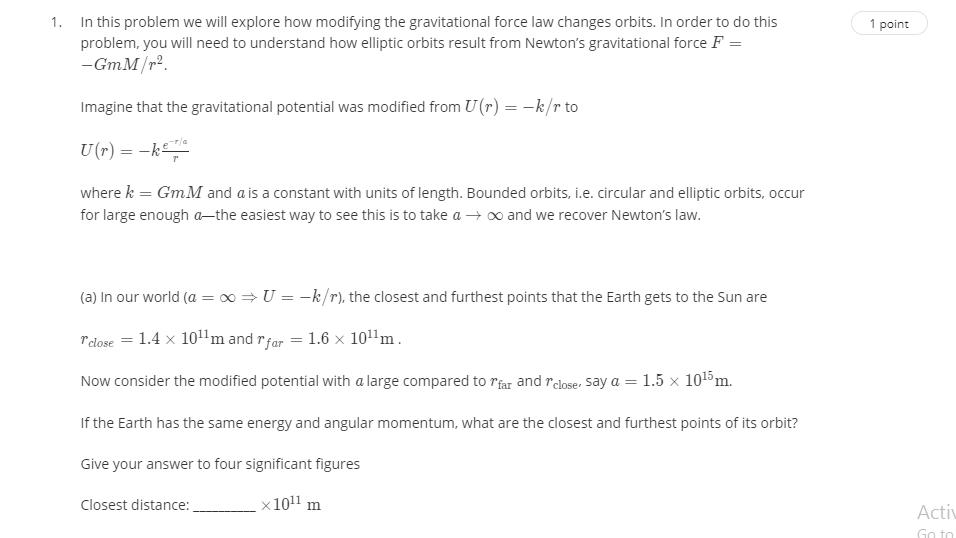In this problem we will explore how modifying the gravitational force law changes orbits. In order to
Question:

In this problem we will explore how modifying the gravitational force law changes orbits. In order to do this problem, you will need to understand how elliptic orbits result from Newton’s gravitational force F = -G m M /r^2F=−GmM/r2.
Imagine that the gravitational potential was modified from U(r) = −k/rU(r)=−k/r to
U(r) = -k \frac{e^{-r/a}}{r}U(r)=−kre−r/a
where k = GmMk=GmM and \mathit{a}a is a constant with units of length. Bounded orbits, i.e. circular and elliptic orbits, occur for large enough \mathit{a}a—the easiest way to see this is to take \mathit{a}\rightarrow \inftya→∞ and we recover Newton’s law.
(a) In our world (a = \infty \Rightarrow U = -k/ra=∞⇒U=−k/r), the closest and furthest points that the Earth gets to the Sun are
r_{close} = 1.4 \times 10^{11} \text{m}rclose=1.4×1011m and r_{far} = 1.6 \times 10^{11} \text{m}rfar=1.6×1011m .
Now consider the modified potential with \mathit{a}a large compared to r_{\text{far}}rfar and r_{\text{close}}rclose, say a = 1.5\times 10^{15} \text{m}a=1.5×1015m.
If the Earth has the same energy and angular momentum, what are the closest and furthest points of its orbit?
Give your answer to four significant figures
Closest distance: __________ \times 10^{11} \text{ m}×1011 m





